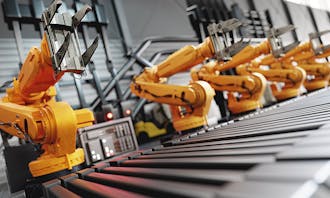- Home >
- Interviews >
-
Ali Nicholl
Ali Nicholl - Iotics
2021-04-07
4 min read

Q. Please can you give me an overview of Iotics and how the business was founded?
Iotics was founded under the belief that the world is based on interactions, and that at the heart of any creation, problem or solution, there is an interaction of ideas, contexts and data. Our founders saw that data exists to solve the most intractable problems, but that the default approach was to focus less on how the data could be used and more on how the data could be stored. The status quo surrounding data and its sharing has also been linked to privacy and security concerns. If there’s no way to share information securely, this raises the question of whether it is right to do it at all.
At Iotics, we and our partners recognised an opportunity to enable everyone to benefit from digital transformation by revolutionising our approach to data. Data itself has limited value, but when it can interact with other data, the benefits are enormous.
That’s the goal of Iotics — to unlock the true value of data through data interactions.
Q. What are Iotics’ main products and services?
Iotics’ patented technology turns silos of data into a web of sources. This liberates data to interact across internal and ecosystem boundaries.
Data interactions are an unexploited resource that enable enterprises to adapt, survive and thrive, risk-free. Until now this has not been possible – data is hard to gather, difficult to access, does not interoperate between sources and its use and reuse is inhibited by security concerns. Our product, Iotic Space, solves these problems.
Iotics creates digital twins of data sources in Iotic Space. Interactions occur between the ecosystem of virtual twins to preserve the security of data sources and users. This enables users to confidently build digital ecosystems of assets – people, places, processes or things – which can interoperate, within and beyond organisational boundaries. Enterprises, cities and communities are transformed as diverse data sources become discoverable. Data silos become a web of sources and assets become interactive services.
”
Iotics enables users to find data and interact with it securely. This enables digital ecosystems of assets to interoperate across supply chains with security and confidence.
”
Q. What is the main innovation you bring to the market?
Iotics enables users to find data and interact with it securely. This enables digital ecosystems of assets to interoperate across supply chains with security and confidence. In this way, data sources become discoverable, data silos become a web of sources and assets become interactive services.
The liberation brought about by discoverable data that can interact securely across and between boundaries becomes the vehicle for digital transformation. Interactions occur between the ecosystem of virtual twins, preserving the security of data sources and users. Users can confidently build digital ecosystems of assets, transforming their business and those of their partners, customers and suppliers.
Q. What is the greatest challenge that the company overcame?
The greatest challenge was enabling others to believe that there was another way of approaching data. That meant creating the product and tools that allowed them to experience the potential and value of data interactions for themselves. We had to find a community of individuals and organisations that recognised that the current approach to data can be changed.
The definition of madness is to do the same thing over and over and expect different results. So, the solution to the problems we have wrestled with for decades isn’t to do things slightly differently, but to do entirely different things.
We’ve been very fortunate to meet customers, suppliers, partners and analysts along the way who share our vision of secure decentralised data interactions and their transformative potential.
Q. How do your products and services tie into the growing use of automation in manufacturing?
Secure data interactions working between silos are the bed rock of autonomous interoperability. For automation to flourish, we need systems and approaches that allow machines to read the world. To interact, data needs to be described, enriched and contextualised. We need data about our data, the meta data, to enable our systems to communicate with each other.
The FAIR data principles — Findability, Actionability, Interoperability and Reusability — offer a practical approach to this. FAIR data principles allow us to build data interactions that not only increase the value of data assets, but also multiply the value of the assets the data present. Overlaying data with descriptive meta data gives it meaning that other machines can understand, while semantic web technologies, such as Resource Description Framework (RDF) allow for intelligent automation.
The technology itself bridges the gaps between different tech languages, so the user doesn’t have to. You don’t have to be an expert in train engines to get the train engine data you need. Iotics provides this expertise for you, democratising and decentralising access to the benefits and transformative potential of automation and autonomous systems.
Sign up for updates.
Try these
You might also like

Interview
John Young - EU Automation
Implementing an automation system without first thoroughly planning your approach can be a very risk...

Interview
Neil Ballinger - EU Automation
Have a plan to manage the risks. Planning ahead rather than reacting to failures gives you a competi...

Interview
Jon Brewin - AutoStore
AutoStore is the cube storage pioneer, inventing the technology and using the last few decades to pu...



